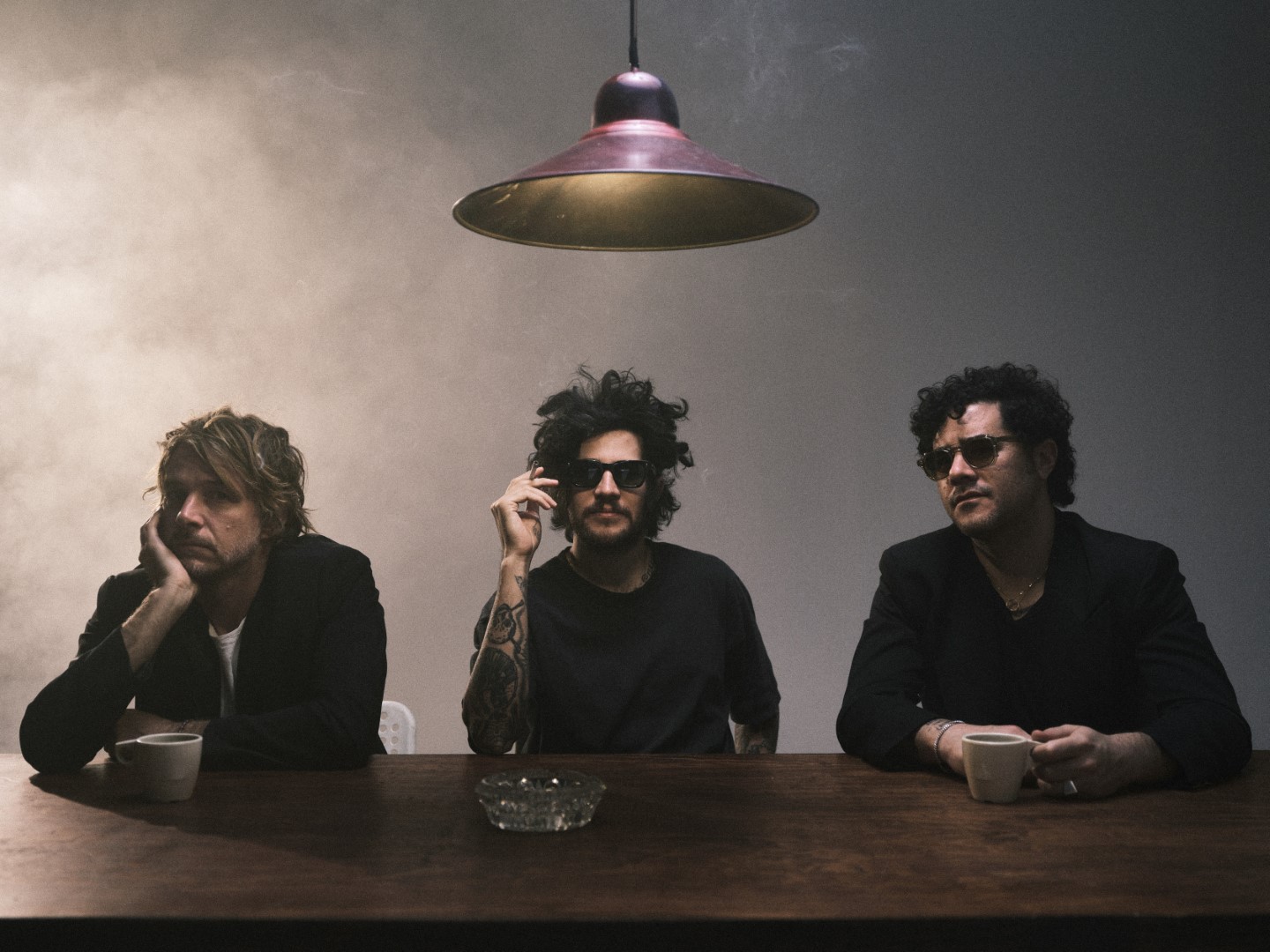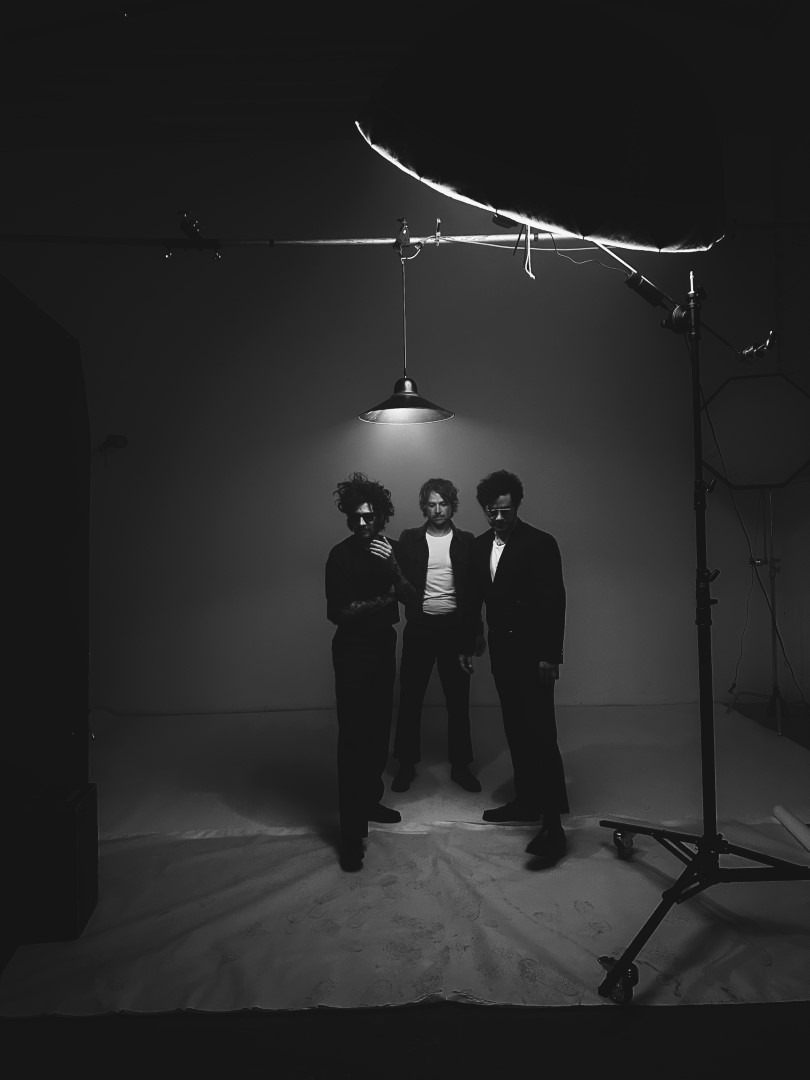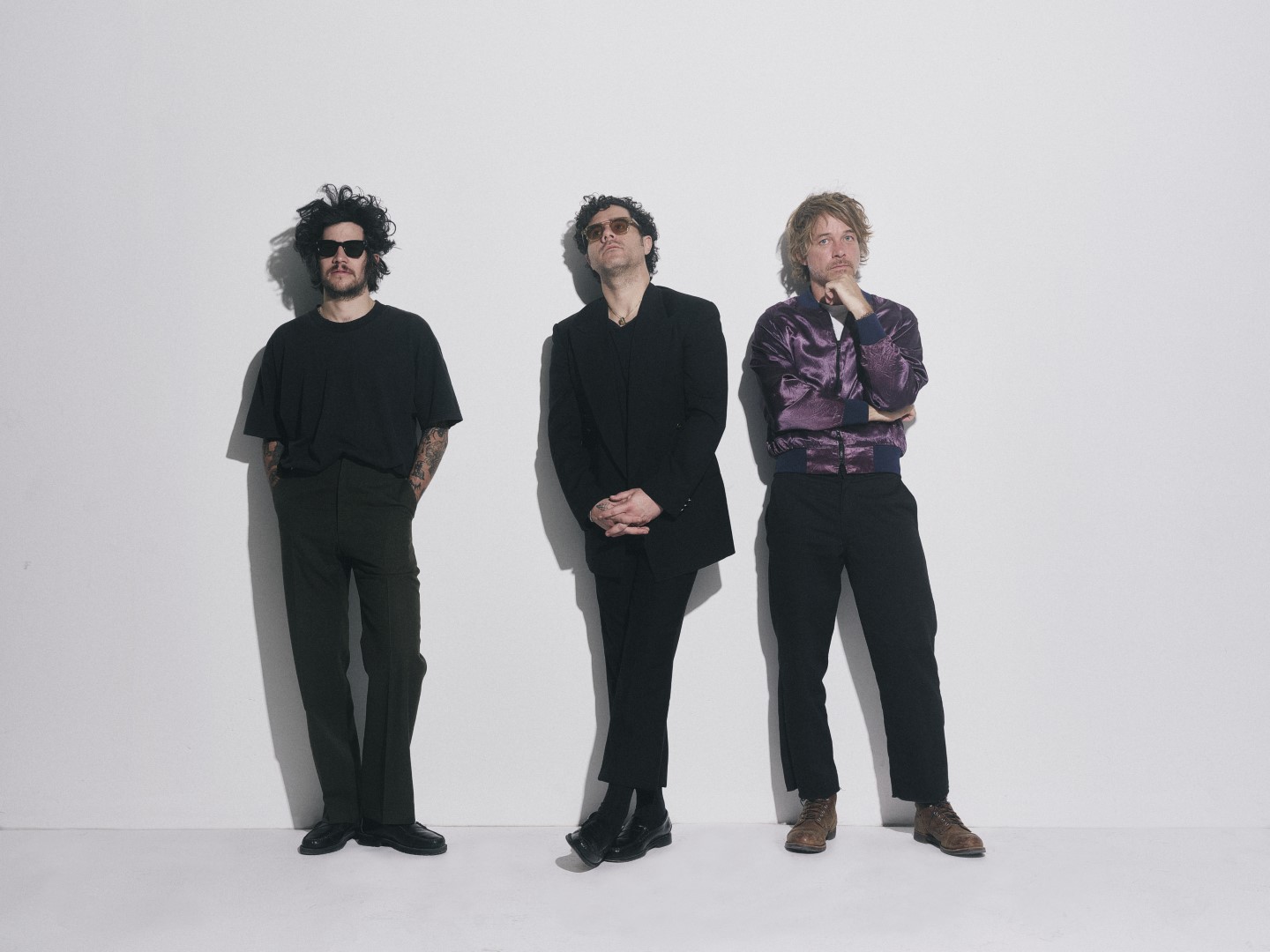Rey Pila

Rey Pila are a Mexican indie band who write music best described as a blend of rock and electro. Translated to English, their name means ‘King Battery’, which feels apt for the mix of powerful rock guitars and electronic synths that form the basis for their latest album, Estan Strange I (Eng: They Are Strange I). With over a decade of album releases under their belts, the trio of Diego Solórzano, Andrés Velasco, and Rodrigo Blanco have built a cult-like following in their native Mexico, collaborated extensively with mentor/muse Julian Casablancas (The Strokes), and played stadium gigs and other huge venues while sticking to their signature, danceable, dirty electro-rock style.
We spoke to Diego from Rey Pila about the band’s latest release, the frustrations associated with not being a slave to trends, and their plans for 2025 and beyond.
FAULT Magazine: Like a lot of artists we’ve interviewed, it sounds like you guys made use of the weird warping of space-time that was the pandemic to re-assess your approach – particularly with regards to production. After working on some tracks for Estan Strange I with producer Paul Salva, you moved to a more ‘DIY’ approach for others. What prompted that decision?
Rey Pila (Diego): I worked with Paul on another project right after the pandemic, I learned a bunch of new production tricks. It was like going to music school, learning what normally takes years in a short period of time.
Right after, the three of us went to Sonic Ranch studios in Texas to work on a few tracks with him. We left most of the tracks unfinished. After returning home, I began to experiment with the sessions we’d recorded in Texas on my computer, and I realized that the stuff I was experimenting on was really working. From that moment on, I started to produce the other tracks myself for the rest of the album.
Apart from the guitar tracks, you took the decision to use virtual instruments rather than physical ones for a lot of the album. That feels like a pretty big departure from your previous work, a lot of which has a distinctively retro and/or garage-rock flavour to it. Do you see yourselves continuing to move away from analogue in future? Or was this a one-off decision for Estan Strange I?
Honestly, it boils down to me not having any money to pay the rent and having to sell all my synths [laughs]!
I had to learn to use the virtual instruments out of necessity. The album was written and produced with two guitars, one bass and my computer. In hindsight, I think the sounds of the virtual instruments gave the record a particular feel – a bit more modern sounding, maybe?

Rock music still holds massive appeal in Mexico in a way that it perhaps doesn’t in other parts of the world. Do you think that association means that Mexican guitar bands get pigeonholed to some extent?
Not really. Mexico is going through the same phase the rest of the world is going through with regards to music. Reggaetón, Mexican regional music, and trap hold the best seats at the table, leaving rock and indie music on the side.
We don’t get the same level of attention we used to get some years ago: our style of music isn’t all that popular at the moment. Music promoters here in Mexico gravitate towards what Spotify and social media numbers dictate.
On the other hand, rock music continues to be popular here – but mainly for foreign artists.
It’s not the best of times for us in terms of attention, but we feel satisfied and fulfilled writing music that we really like and care about, with a very diehard fanbase. We try to stay away as much as possible from the frivolity and money-driven aims of the mainstream.
There’s also the modern rock musician drama where nothing is as good as the “good ol’ indie days”, where indie rock was the center of attention. You can really feel the sense of jealousy among contemporary musicians in this space – a lot of guitar bands feel a bit left out as a result of this new music order.
How would you describe your sound? And how would you say it’s developed since the release of your eponymous debut back in 2011?
Mmm… good question… We love listening to rock music but that’s not all we listen to. I personally listen to way more electronic and classical music than rock.
We like to give names to the type of music we play according to the different musical styles we like.
So, when we’re discussing our music between ourselves, we’ll give it genre names like “goth dub” or “Atari darkz”…
You’re huge in your native Mexico: you’ve played enormous venues, including stadia, and supported some international icons like Depeche Mode and The Cure. Arguably, though, you haven’t had the same levels of success on the global stage. Why do you think that is, and is it a source of frustration?
We spent much of the past ten years playing in the US, with some short tours in the UK and South America. That helped us gain some attention outside Mexico, but not enough to become known in other parts of the world.
We would love to tour the UK again! We felt at home when we played there, and I believe the band has so many things in common with the UK in terms of musical taste and style.
That said, I guess one of our most common frustrations is that we’d love our music and story to get much more exposure in Mexico as well. It’s so hard in the current attention economy. In general, the music industry, and several other artistic disciplines here in Mexico, bows down in a submissive way towards anything foreign. It’s quite something…
That’s one of the reasons why so many foreign bands love playing down here: they get a level of attention that they don’t get anywhere else. In some cases, that includes in their own countries of origin.
You’ve worked closely with Julian Casablancas. How do you think that collaboration has shaped your approach to music – both professionally and in an artistic sense?
We’ve become fairly well-known in the US thanks to him. He took us under his wing for a while; he helped us a lot to try to become more popular outside Mexico.
We learned a lot from the experience of working with him, particularly on the writing side. He has a very unique way of approaching music – like nothing we’ve ever seen before. He is one of our artistic muses.

Who would you most like to collaborate with and why?
We would love to collaborate with Boards Of Canada. If we managed to make our songs sound like that, we would be able to find musical peace. We’re big fans!
If you weren’t making music, what would you be doing?
Probably a doctor or history teacher.
Estan Strange I dropped on 28th November. What’s next for you? Can we expect to see a big tour announcement to promote the album? Or are you holding off until festival season?
We are working on a big tour for 2025. Starting in Mexico. There’s also some South American dates and UK dates in the works. We’re looking forward to playing this album everywhere we can.
What is your FAULT?
Everything.